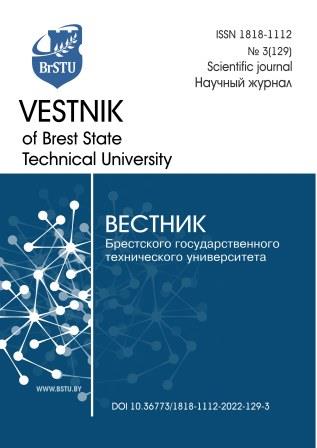TECHNOLOGICAL MODELING OF THE PROCESS OF REAGENT REMOVAL OF PHOSPHORUS FROM WASTEWATER
DOI:
https://doi.org/10.36773/1818-1112-2022-129-3-2-4Keywords:
wastewater treatment, dephosphotation, optimal planning, multifactorial experiment, aluminum polyoxychlorideAbstract
The work is devoted to the study of the technology of urban wastewater treatment, specially designed to remove the biogenic element phosphorus. An analytical review of the achievements and publications on the study of the process of wastewater dephosphotation by the reagent method is given. Based on the analysis carried out, the results of our own experimental studies are proposed and substantiated. The dependence of the effect of dephosphotation of wastewater on the dose of the reagent when using mineral coagulants, taking into account changes in environmental conditions, has been established. To optimize the cleaning process, mathematical modeling methods based on influencing and determining factors were used. Graphs and regression equation obtained, which determine the dependence of the residual concentration of wastewater phosphates on the dosing conditions of the aluminum polyoxychloride reagent.
Downloads
Published
How to Cite
Issue
Section
License

This work is licensed under a Creative Commons Attribution-NonCommercial 4.0 International License.
The work is provided under the terms of Creative Commons public license Attribution-NonCommercial 4.0 International (CC BY-NC 4.0). This license allows an unlimited number of persons to reproduce and share the Licensed Material in all media and formats. Any use of the Licensed Material shall contain an identification of its Creator(s) and must be for non-commercial purposes only. Users may not prevent other individuals from taking any actions allowed by the license.










